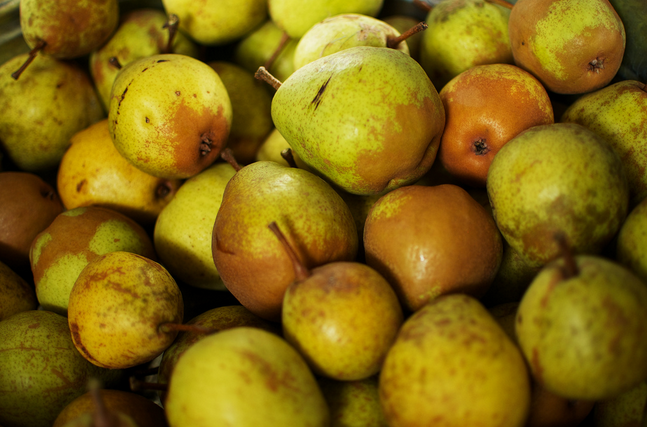Power Sides With Power
In the wake of the terrorist attacks on 9/11, the CIA saved American lives http://t.co/N9RDUCw5Yt see http://t.co/Ah8ZYm8UeN #supporttheCIA
— Ron Conway (@RonConway) December 9, 2014
To apprehend the full power of Silicon Valley is to identify yourself as a rube; this is what makes it so hard. Its leaders’ ambitions have only scaled to match accelerating consumer complicity: They had no choice to accept the power that we couldn’t, and can’t, seem to give them fast enough.
It would not be shocking to see a titan in an adjacent industry demonstrate an instinctive trust in power. An expression of shock in response to this pointed statement from Ron Conway, one of the most influential technology investors of the last two decades, is at best an admission of ignorance and at worst an admission of guilt.
The Top 40 Hot Takes on "The New Republic," in Order from Worst to Best
I think I’m the only white guy in America who hasn’t written a piece about The New Republic yet.
— Jeffrey Goldberg (@JeffreyGoldberg) December 9, 2014
40. Benjamin Freed, Washingtonian. “B.J. Novak’s Character on “The Newsroom” Is a Lot Like New Republic Owner Chris Hughes”
39. Howard Kurtz, Fox News: “Hughes isn’t the only tech mogul to stumble as a media owner.”
38. Daniel Greenfield, Front Page: “Modern liberals like the idea of being intellectuals without the work of debating ideas.”
37. Joe Nocera, NY Times: “In the two years that Hughes has owned it, The New Republic regained its reputation for smart, lively, engaging journalism.”
36. Chris Hughes, Washington Post: “If we wanted to chase traffic with listicles and slide shows, we would have.”
35. Smitty, The Other McCain: “This is another suck-is-the-new-cool call from the manor house down to the the peasants working the fields.”
34. Dylan Byers, Politico: “Guy Vidra says he doesn’t want to change The New Republic.”
33. Robert Fulford, National Post: “Not to worry: Long-time readers are aware that the magazine frequently changes, often in startling ways.”
32. Paul Horwitz, PrawfsBlawg: “ “It was tragic to watch — like watching a patient get sicker and sicker every day. And now it is finally dead, alas.”
31. David Klinghoffer, Evolution News: “It’s the rare development in the news that you can feel almost entirely good about.”
30. Seth Stevenson, Slate: “TNR’s influence had long been on the wane. It will live on, it may modernize in helpful ways, and, one assumes, will continue to publish good work — though at what frequency and just how good remains to be seen.”
29. Lloyd Grove, Daily Beast: “It is not, or not primarily, a business. It is a voice, even a cause.”
28. Robert Kuttner, American Prospect: “It is incautious and even churlish to write premature eulogies.”
27. Ezra Klein, Vox: “TNR.com might flourish under Snyder. But it won’t be what The New Republic was. And that’s because the thing The New Republic was has already died.”
26. Michael Hiltzik, LA Times: “In brief, the magazine’s past isn’t quite as glorious as the departing staff makes out, and its future is unlikely to be saved by the draconian vision Hughes seems to offer.”
25. Dan Drezner, Washington Post: “Apparently, ‘disruption’ means acting in as douche-y a manner as possible toward existing employees.”
24. David Folkenflik, NPR: “The steward triggered chaos inside his newsroom last week by hiring a new editor before telling the old one he had been fired. My bad, Hughes says.”
23. Ross Douthat, NY Times: “The peril isn’t just that blithe dot-com philistines will tear down institutions that once sustained a liberal humanism.”
22. Jacob Heilbrunn, Politico: “Destroying the New Republic’s liberal pedigree? That happened a long time ago.”
21. Peter Beinert, The Atlantic: “On the major domestic-policy battles of recent years, TNR’s perspective was virtually identical to the one espoused by Ezra Klein, The New York Times, and MSNBC.”
20. Jonathan Mahler and Ravi Somaiya, NY Times: “In retrospect, last week’s meltdown at The New Republic should have been easy to predict.”
19. Jason Abbruzzese, Mashable: “At some point, you have to increase the number of articles to achieve financial solvency.”
18. Mark Hemingway, Federalist: “Looking at the journalistic wasteland before us, it seems obvious that we need more extended discussion of issues and policy, and less of the reactive, steaming-hot takes about whatever happened 45 minutes ago.”
17. Felix Salmon, Fusion: “A lot of my conversation with Hughes was centered on words like ‘viable’ and ‘sustainable’ and ‘if I fell under a bus tomorrow.’”
16. Megan McArdle, Bloomberg: “The New Republic was already on a long, slow march toward the abattoir.”
15. David Greenberg, Slate: “Internet journalism has made it easy to find opinions that confirm one’s own beliefs and flatter one’s prejudices.”
14. Will Baude, Washington Post: “There was something profound about intellectuals taking their own ideas — and their own mistakes — that seriously.”
13. Greg Grandin, The Nation: “I, for one, welcome the Gawkerization of The New Republic.”
12. Emily Bell, Guardian: “The irony of the New Republic’s retreating elite posting their displeasure on Facebook was heightened by Hughes publishing a defense of his plans for the magazine… through that most traditional of outlets: the Washington Post.”
11. Dave Weigel, Bloomberg: “What exactly the new New Republic was supposed to be, and who it was for in this new era, was often hard to figure.”
10. Philip Weiss, MondoWeiss: “Some day Max Fischer will write about how he sat there and said not a word when liberal Beltway types who knew no Arabs talked about the necessity of launching indiscriminate strikes on Palestinian neighborhoods.”
9. Jonathan Chait, NY Mag: “Hughes and Vidra have provided no reason at all for anybody to believe they have a plausible plan to modernize The New Republic.”
8. Daniel J. Flynn, Breitbart: “Liberals can stomach a traitor at the helm; a dolt, never.”
7. David Callahan, Inside Philanthropy: “Even as more rich people have come forward to give money for journalism with no expectation of a financial return, Hughes is taking a different path by seeking to make the New Republic financially sustainable — an idea that strikes many top journalists as outrageous.”
6. Jim Sleeper, Salon: “Like so many other young, market-molded Americans, they don’t understand how the perversion of public life by tsunamis of marketing, financing and technological innovation has decontextualized and overwhelmed thoughtful writing, reading and the habits of mind and heart that sustain republican deliberation and institutions.”
5. George Packer, New Yorker: “I highly doubt that Hughes wanted this debacle. He didn’t plan for a change at the top to expose the emptiness of his commitment to the hard work of journalism.”
4. Leah Finnegan: “It’s clear that the new leadership of the magazine — with all their greasy Facebook money — is dead set on ruining a (historically racist) publication no one ever read in the first place, and was on the slow road to Irrelevance City.”
3. Ta-Nehisi Coates, The Atlantic: “The family rows at TNR’s virtual funeral look like the ‘Whites Only’ section of a Jim Crow-era movie-house.”
2. James Kirchick, Daily Beast: “Chris Hughes and Sean Eldridge have always been entitled brats. And now the media has finally noticed.”
1. Dana Milbank, Washington Post: “The moist-eyed Hughes would, in the coming months, prove himself to be neither an intellectual nor a partner but a dilettante and a fraud.”
New Smart Features Offer a Simplified User Experience
by Awl Sponsors
Brought to you by LG G3.
Boasting a revamped user interface and host of new features, the new LG G3 is the ultimate in smart technology. Unveiling the first 5.5-Inch Quad HD display announced in the U.S. market, Laser Auto Focus, Smart Notice and “Tap to Shoot” features, the G3 offers an overall simplified user experience. Additional design elements offer a sophisticated and sleek look and feel.
For more information, visit facebook.com/LGMobile.
Eat the Pear

The problem with the pear is the same problem that afflicts the apricot and the cantaloupe. When ripe, and fresh, and of good quality, it is spectacular, but it is a low-percentage fruit, its ripeness difficult to divine and often misjudged. I would wager there are literally millions of pear-eaters who have never had a good pear.
And that is unfortunate, because it is really an excellent fruit. Cheap, easily available, some varieties fairly hardy, with a wide variety of textures and flavors and uses, pears may not be quite as easy and foolproof as apples, but can make a fine walking-around fruit in addition to the more adjustment-friendly methods you might put them to in the kitchen.
There are dozens of varieties of pear, but in the States it is damnably difficult to find most of the weirder heirloom varieties. Still, a trip to an fancy grocery store or farmers market in the late autumn will yield a few different types. What they have in common, aside from all being pears, are called sclereids, or stone cells. These are plant tissue with a distinct hard exterior, hence their name, and are responsible for the “gritty” texture of pears. I think some people do not like this texture; it can get stuck in your teeth. But that is merely a symbol of the inherent toughness of the pear! Pear trees can live for over a hundred years, their wood is so fine and hard that it’s often used for woodwind instruments, and in some parts of Chinese mythology it’s a symbol of immortality! This concludes the Fun Facts section of today’s Crop Chef.
Here are the most common varieties of pear in the US and how to tell if they’re ripe. It’s tricky because the majority of pears never ripen on the tree; they can only ripen when picked. To speed up ripening, you can stick a banana in the fruit bowl, and to slow down ripening, you can put the pear in the fridge. But how do you know when it’s ripe in the first place?
Bosc Pear: This is the elongated matte brown pear. Moderately crisp and very fibrous, it’s the easiest to tell when ripe. Look up near the stem, on top of the pear. When the pear is ripe, the skin around the stem will be slightly wrinkly, and very slightly soft to the touch, but the rest of the pear will still be firm. If the body of the pear is soft at all, forget it, it’s rotten.
Seckel Pear: These are the miniature green/yellow/red pears that look like the pear version of crabapples — too impossibly tiny to be good, right? WRONG. These are my favorite pears, I think. The flavor is really intense, but they’re not astringent at all like you might expect from their doll-like size. Don’t bother waiting for them to change color; they will, but it won’t indicate anything about ripeness. Instead, press them gently about a third of the way down from the stem. It should be a little soft there, not quite as soft as a ripe avocado, but still firm lower down.
Bartlett/Red Bartlett: The most common type of pear sold in North America is technically called the Williams’ Bon Chrétien. Great name, but a tough pear. The two color morphs taste the same — the color is a mutation that doesn’t affect flavor or texture — so I go for the regular green/yellow variety, because it’s much easier to tell when it’s ripe. You have to treat these like bananas: they’ll be hard and not very sweet when green, and as they turn yellow, they’ll get softer and sweeter. The window in which these are perfectly yellow and ripe-avocado-soft is like a single day, so as soon as they get to that point, stick them in the fridge and/or eat immediately.
D’Anjou: Looks like a Bartlett, but is both tastier — richer, sweeter — and harder to ripen. It’s green, and the same shape as a standard Bartlett, but it won’t change color. You’ll have to check if it’s ripe the same way you do with a Seckel pear: push with your thumb up near the stem, and when it’s slightly soft but the rest of the fruit is firm, it’s ripe.
Comice: The biggest dickhead pear of them all is the Comice, because, well, it’s the best. It’s the biggest and tastiest, super sweet and juicy and incredibly powerful in flavor. When it’s properly ripe, you’ll almost want to eat it with a spoon; it seems too delicate to chomp into. You can tell if it’s ripe by the same near-the-stem test as the D’Anjou and Seckel, but the Comice is really thin-skinned and delicate, and basically impossible to find a flawless one. It’ll look bruised and knocked-around pretty much no matter what.
Forelle: Another toy-sized pear, the Forelle is a little bigger than the Seckel, and I think not quite as tasty (it’s a bit milder in flavor), but still very good, and very easy to assess. It’ll turn yellow and then sprout little freckles all over it like a redhead in the summertime. When it’s all freckled, it’s good to go.
Asian Pear: There are a few different types of these, but the most common is an apple-shaped, light russetted brown pear that is sometimes seen sitting in its own tiny foam nest. Pears as we know them today probably originated in China, and this one is totally different from the European and North American varieties: it is often huge, and expensive, and with a mild flavor and obscenely crisp texture, boasting a snap a Honeycrisp only wishes it had. Asian pears are the exception in that they do ripen on the tree, and won’t really ripen that much afterward, so it’s up to you as a shopper to make sure you get a good one. An unripe Bosc or Forelle can be home-ripened and made delicious, but an unripe Asian pear will forever be sort of sour and shitty. So! Your Asian pear should be unblemished, and feel a little bit heavy for its size (heaviness indicates a higher sugar content, which is what we want). Give the Asian pear a good smell; it should smell a bit sweet. That’s pretty much all you’ve got to go on. Sorry. But they’re really good.
Prickly Pear: Is not a pear. Also wear gloves when you handle it because it’s full of spines.
Mostly, I prefer to eat pears as is; the softer varieties like the Comice and Bartlett fall apart immediately when exposed to heat, and are just one of those fruits that’s best eaten rapidly over the sink as the juice coats your chin and sinks into your beard and causes your girlfriend to later pick small bits of pear out of your beard because you’re a disgusting human. That said: There are ways to prepare the pear.
RECIPES
If you’ve got unripe pears but you want to eat them right now, there are a few ways to do that. One is a classic poached pear, which is uncool but also really good, so whatever. This works fine with pretty much any pear except a ripe Comice, which will turn to mush. Peel three or four pears (this is one of the very few times you should peel a pear), cut in half length-wise, and scoop out the (very small) core and seeds with a spoon. In a saucepan, heat up about half a bottle of rich red wine of some sort (I don’t know anything about wine and won’t pretend to) and half again as much water, and add a small knob of sliced ginger, a stick of cinnamon, and a lemon peel. When hot, stir in about a cup of sugar (I use demerara but it doesn’t matter, I don’t think). The amount of sugar will vary a little based on how bad your pears are; you may have to experiment to get this right, but if it’s wrong you can just add more sugar or more liquid. Anyway, dissolve the sugar and then bring the mixture to a boil, then add your pears, and keep the liquid at a simmer for about 20 minutes until your pears are soft. Serve with vanilla ice cream or Greek yogurt sweetened with honey.
I have a whole bunch of recipes that can change slightly depending on what’s in season, so let’s repurpose that old roasted brussels sprouts and grapes recipe for early winter, by making it a sprouts and pears recipe! Pre-heat the oven to 400 degrees. Get a whole mess of brussels sprouts, I don’t know how many, like 20 maybe, and trim the stalk and slice them in half the way we’ve been doing ever since we stopped boiling them whole and started liking them. Put them in a big mixing bowl along with a handful of shelled pistachio nuts (pecans and almonds also work well). Slice half an onion and put that in the mixing bowl too. Then get a ripe or slightly underripe Bosc pear and cut it into pieces a little bit larger than your sprouts, and throw it in the bowl too. Pour in some olive oil and some dried thyme (fresh if you have it, but it’s December, everything’s dead) and mix it all up, then pour it all out onto a baking sheet. Turn all the sprouts so they’re cut-side-down, and separate everything so nothing’s touching or too close together, then roast at 400 degrees until the sprouts are browned on the bottom. To serve: season with salt and black pepper and a squeeze of lemon on top.
Another weird thing to make with slightly unripe pears is pear chips. Bosc is probably the best for this, but I’ve used shitty Bartletts that refuse to ripen and had good results. Pre-heat your oven to its lowest setting, which is probably around 150 degrees. Using a mandoline, slice the pears very thinly — not paper thin, more like cardboard box thin. Oil a baking sheet with vegetable oil, just a little bit. Lay the pears down so they’re not overlapping or touching, and roast at 150. After like 90 minutes, flip them and see what they look like; they should be a little bit golden, like apple chips. The entire process could take like four hours, it all depends on the type of pear. You can make these sweet by sprinkling them at the outset with a little cinnamon and sugar, but I kind of like them just the way they are.
If you’ve got slightly overripe pears, you’re probably out of luck, but if they’re just like a little smooshy in spots but not quite dry and mealy, you might be able to make vanilla bourbon pear sauce. (This also works with ripe pears, and slightly unripe pears, of any variety!) Slice three pears into small slices, pretty thin and no bigger than an inch square. Heat up a dutch oven or equivalent on medium and throw in a third of a stick of butter to melt. When melted, toss in your pears and stir around, then add your sweetener. I use honey, because I love honey, but brown sugar works just as well. The amount will vary; if your pears are overripe, add no more than a tablespoon. If underripe, add more. Taste it and see if you want it to be sweeter. Add in a pinch of salt as well. Stir this all around until combined and starting to become a little syrupy, then add a glug of bourbon and a few drops of vanilla extract (or the seeds of one vanilla bean if you’re some kind of hotshot). It will smell extremely alcoholic. Bring this mix up to heat and then turn the stove down to low and let it simmer, stirring occasionally, until the sauce has reduced to a syrup and it no longer smells like booze. Serve with ice cream or on top of oatmeal or on of oatmeal with a scoop of ice cream on top of that.
This column may not be enough to convince you to buy more pears. And it’s okay if you’d rather go for the easier fruits, the apples and peaches of the world which reveal their flavor at the slightest glance or whiff. Pears are harder, sure. But I’d argue that pear sauce is far better than applesauce, and that a proper pear — a really good one, a really ripe one — is an experience better than any apple can give. Sometimes a dozen shitty pears can make that perfect 13th that much better.
Photo by Brad K.
Elena Ferrante "Speaks"
“I didn’t choose anonymity; the books are signed.”
— Here’s an interview with Elena Ferrante, whose continued insistence on making it about the work is as admirable as it is rare.
Three Provocations

1. Left of the entrance to Barclays Center, on approach, in front of the Starbucks, a small group gathered beside the protest, which itself had clustered in front of a row of police officers. The chant had faded from Eric Garner into Mike Brown; the central circular march had lost its shape, but seemed to be finding it again. An older white man in a leather jacket walked up, looked around with a smile on his face, and laughed. He approached a young woman with a sign and asked what all this was about, and she said putting an end to white supremacy. Emoting and sounding much more like Andrew Dice Clay than he did before, he lapsed into a sort of bit. White supremacy? They still have that? How can I get in on that? He laughed again and she winced. The pair fell out of earshot, then quickly parted ways. The man wandered off, as content as before, and the woman with the sign returned to face the crowd, looking a little more tired.

2. Two white teenage boys, amped on hormones and giddy with post-game exuberance, drifted out of the pillar of non-participants that was now filing from the doors of Barclays directly through the protest. The game had let out; it was quarter to ten, about two hours after the big die-in, and a few minutes before Jay-Z and the Duke of Cambridge shook hands inside. I could not hear what the teens said, only that they were laughing. One threw his arms up in the air. Theirs was an energy that did not fit anywhere between the still, tense police and the marching, careful protesters. Another teenager, this one marching, intercepted them verbally. Fuck you, you’re an idiot — you’re fucking racist. The teens were neither fazed nor humbled nor interested in whom they had upset or how. They kept laughing, a little more intensely than before, and filed forward.

3. A young white couple leaving the game pushed through a crowd that was moving toward the subway entrance that faces Barclays. A man nearby had yelled to shut down the trains, and a small segment of the protesting crowd moved in his direction. The bustle startled the couple. One partner said to the other, privately but within earshot of at least a dozen people, you wanna say, hey, we’re on your side!. She laughed, and then they walked toward the unobstructed subway entrance across the street, by Modell’s. Neither looked back.
New York City, December 7, 2014

★★★★ Whitecaps moved on the dark water downriver. The sun shone full on the face of the slabs of apartments to the west, and put a shine on the wet spots still under the scaffolding. Up in the blue were a few white smudges, like something an archaeologist would point to as the site where clouds had once been. Shadows of curved balconies marched up a tall blank brick wall. Going uptown on the avenue there had been a stiff headwind, and coming back there was blinding head-sun. A recalcitrant and turning toddler was an incomprehensible two-dimensional cutout in the way. “Whoa! It’s totally blue outside,” the three-year-old exclaimed, as the sun headed down.
Sex Canadian
“Canada continues a proud tradition of raising and celebrating its homegrown perverts, artists who are deeply committed to pushing your sexual boundaries farther than you ever consciously wanted them to go. I mean, we (I) have made a lot of jokes about how this is a book about a woman fucking a bear, but it really is. There aren’t a lot of metaphors present here. I was mostly impressed by how much of a real bear Engel made this bear, refusing to give him even a hint of humanity, writing Lou as a woman who deludes herself into thinking she understands what an animal is thinking, that a bear could somehow love her back, could derive some pleasure from her pleasure, despite all evidence to the contrary. The bear smells bad and is kind of ugly and, I guess spoiler alert, but whatever, when Lou really does try to fuck the bear for real, he claws her back in disgust; if he could speak, I think he would say ‘I’m a bear,’ because, duh.”
The Wisdom Of Jenny Diski
“There is of course nothing else to really think about except death. But that’s not a new realisation for me. I have always been perfectly aware that one could drop dead at any moment, and I have really tried to think myself into that idea since I was a child. Still, now it has more reality, I can’t see I will be skipping off with a hey and a ho and all that. I can, though, get behind the idea of not having to worry about anything any more. That is quite an appealing thought.”
— The next best thing to reading something by Jenny Diski is reading something about Jenny Diski. Jenny Diski is one of the few people left worth reading is what I’m saying here.
